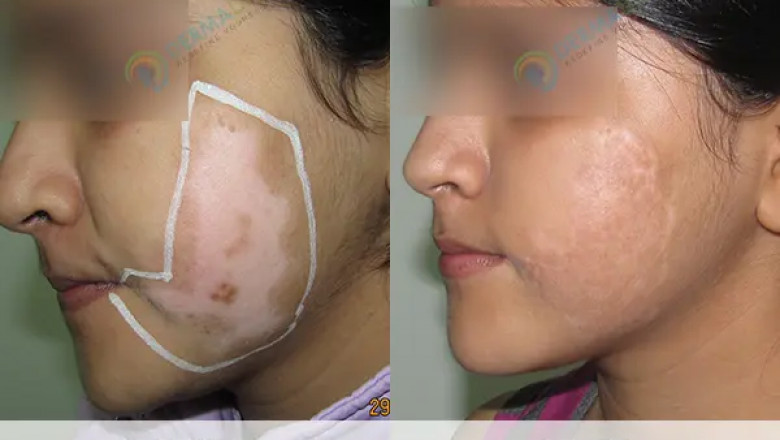views
Causes, Spread, and Effective Treatments
Vitiligo is a chronic skin condition characterized by the loss of pigment in patches due to the destruction of melanocytes, the pigment-producing cells. While the condition is not life-threatening, its psychological and social impact can be significant. Understanding why vitiligo spreads and how it can be treated is essential for managing the condition effectively.
Why Is Vitiligo Spreading?
Vitiligo is unpredictable, and its progression varies from person to person. Several factors contribute to its spread, including:
1. Autoimmune Reactions
Vitiligo is an autoimmune disorder in which the body's immune system mistakenly attacks melanocytes, leading to depigmentation. This self-destructive immune response can cause new white patches to appear over time.
2. Genetic Predisposition
A family history of vitiligo increases the likelihood of developing the condition. Genetic factors play a significant role, and while vitiligo itself is not inherited, susceptibility to autoimmune reactions can be.
3. Skin Trauma and Koebner Phenomenon
Skin injuries, burns, cuts, or even friction can trigger new patches of vitiligo due to a phenomenon called the Koebner response. Patients should avoid excessive rubbing or trauma to the skin.
4. Stress and Emotional Factors
Emotional stress can exacerbate autoimmune conditions, including vitiligo. Psychological stress triggers inflammatory responses that may accelerate depigmentation.
5. Environmental Factors and Chemical Exposure
Exposure to certain chemicals, sunburn, or toxins can contribute to the destruction of melanocytes, leading to vitiligo spread.
Vitiligo Treatment Options in Delhi
Delhi, being a hub for advanced dermatological treatments, offers multiple treatment options for vitiligo, ranging from medical therapies to surgical interventions. Dr. Gaurav Garg, a top dermatologist in Delhi, specializes in cutting-edge vitiligo treatments.
1. Medical Treatments
-
Topical Corticosteroids: These help in reducing inflammation and preventing immune attacks on melanocytes.
-
Calcineurin Inhibitors (Tacrolimus, Pimecrolimus): Used for facial and sensitive areas, these suppress immune responses.
-
Vitamin D Analogues: Helps in stimulating pigment production.
2. Light and Laser Therapies
-
Narrowband UVB Therapy: One of the most effective treatments for widespread vitiligo, encouraging repigmentation.
-
Excimer Laser: Used for targeted vitiligo treatment, particularly in smaller areas.
-
PUVA Therapy (Psoralen + UVA): A combination of light therapy and medication to stimulate repigmentation.
3. Surgical Options
For patients with stable vitiligo, surgical options such as:
-
Melanocyte Transplantation: Transfer of melanocytes from healthy skin to depigmented patches.
-
Skin Grafting: A method to restore pigment in resistant vitiligo patches.
-
Non-Cultured Epidermal Suspension Technique: A modern surgical approach with effective results.
4. Natural and Lifestyle Approaches
-
Dietary Changes: Antioxidant-rich foods, vitamin B12, and folic acid supplements may help in managing vitiligo.
-
Stress Management: Yoga, meditation, and therapy can reduce stress-induced worsening of vitiligo.
-
Sun Protection: Sunscreen with SPF 50+ prevents sunburns and further skin damage.
Why Choose Delhi for Vitiligo Treatment?
Delhi offers some of the best dermatologists and state-of-the-art medical infrastructure for treating vitiligo. Dr. Gaurav Garg and his team use personalized treatment plans combining medical, laser, and surgical approaches to achieve optimal results for patients.
Conclusion
While vitiligo is an unpredictable condition, early intervention and the right treatment can help control its spread and restore pigmentation. If you or a loved one is experiencing vitiligo, consulting an expert dermatologist like Dr. Gaurav Garg in Delhi can significantly improve your treatment outcomes and confidence.














Comments
0 comment